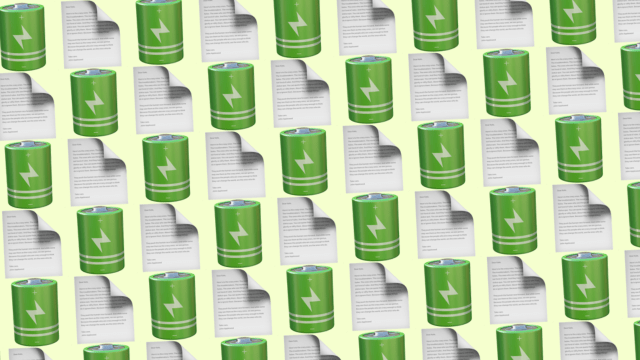Batteries made of paper? Maybe this is something we’ll see soon, as a study from Scientific Reports would indicate.
Published on July 28 and as originally reported by the ABC, researchers at the Swiss Federal Laboratories for Materials Science and Technology (Empa) have created a battery source from a piece of paper, providing a maximum voltage of 1.2 volts (for comparison, a standard AA battery contains 1.5 volts).
The team reckons it could be used in small, disposable electronics, particularly things that are used once and then discarded, but ultimately it has great implications for the future of energy storage.
How does the paper do that? Why, by using ink for power.
Three inks are printed onto a rectangular piece of paper, with salt scattered all over it and with one of the shorter ends dipped in wax.
The first ink contains graphite flakes, which act like the cathode of a battery (the positive charge). This is printed on one side, while on the other, an ink containing zinc powder acts as the anode of the battery (the negative charge). On both sides of the paper, an ink containing graphite flakes and carbon black is printed on top of the other inks, making up the current collectors, connecting the positive and negative sides of the battery.
Now here’s the interesting bit: when you add water, the salt is dissolved, releasing charged ions and activating the battery. If you close the circuit, as in if you connect the positive and negative charges to a piece of tech, you can begin using the electricity generated. Gosh I love science.

“What’s special about our new battery is that, in contrast, many metal-air batteries use a metal foil that is gradually consumed as the battery is depleted. Our design allows us to add only the amount of zinc to the ink that is actually needed for the specific application,” said Gustav Nyström, a study co-author and one of the team members who developed this technology.
It could make a worthwhile power source for low-power electronics.
An alarm clock was used in testing the concept. After being connected to the alarm clock, and after two drops of water were added, the clock was powered for 20 seconds. When the battery wasn’t connected to an energy-consuming device, it was able to reach a stable voltage of 1.2 volts.
It took an hour for the battery to decrease in performance, but after two extra drops of water, the battery kept up 0.5 volts for more than an additional 60 minutes.
Two hours isn’t a particularly large amount of time, but it does indicate that the idea has some weight, especially considering the good it could do for the environment.
This paper battery idea rules, and if there’s a way that we could cut down on battery waste by leveraging it, then it’d be an incredible breakthrough. Maybe it could be used in soft robotics.
You can read the study in Scientific Reports.
